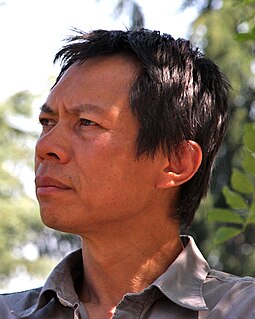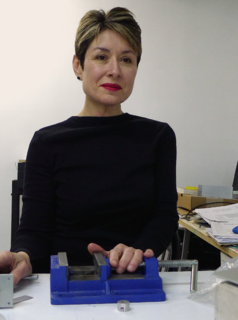Artistic freedom can be defined as "the freedom to imagine, create and distribute diverse cultural expressions free of governmental censorship, political interference or the pressures of non-state actors." Generally, artistic freedom describes the extent of independence artists obtain to create art freely. Moreover, artistic freedom concerns "the rights of citizens to access artistic expressions and take part in cultural life - and thus [represents] one of the key issues for democracy." The extent of freedom indispensable to create art freely differs regarding the existence or nonexistence of national instruments established to protect, to promote, to control or to censor artists and their creative expressions. This is why universal, regional and national legal provisions have been installed to guarantee the right to freedom of expression in general and of artistic expression in particular. In 2013, Ms Farida Shaheed, United Nations Special Rapporteur to the Human Rights Council, presented her "Report in the field of cultural rights: The right to freedom of expression and creativity" providing a comprehensive study of the status quo of, and specifically the limitations and challenges to, artistic freedom worldwide. In this study, artistic freedom "was put forward as a basic human right that went beyond the 'right to create' or the 'right to participate in cultural life'." It stresses the range of fundamental freedoms indispensable for artistic expression and creativity, e.g. the freedoms of movement and association. "The State of Artistic Freedom" is an integral report published by arts censorship monitor Freemuse on an annual basis.

Biennale, Italian for "biennial" or "every other year", is any event that happens every two years. It is most commonly used within the art world to describe large-scale international contemporary art exhibitions. As such the term was popularised by Venice Biennale, which was first held in 1895. The phrase has since been used for other artistic events, such as the "Biennale de Paris", "Kochi-Muziris Biennale", or even as a portmanteau as with Berlinale and Viennale. "Biennale" is therefore used as a general term for other recurrent international events.

Stephen Stapleton is an artist, social entrepreneur, and founding director of Edge of Arabia, CULTURUNNERS, and the UK charity The Crossway Foundation.

The Asian Cultural Council (ACC) is a non-profit organization dedicated to advancing international cultural exchange between Asia and the U.S. and between the countries of Asia through the arts. Founded by John D. Rockefeller 3rd in 1963, ACC has invested over $100 million in grants to artists and arts professionals representing 16 fields and 26 countries through over 6,000 exchanges. ACC supports $1.4 million in grants annually for individuals and organizations.
ELEKTRA presents and promotes works created at the intersections fo contemporary art and new technologies, inscribed in the latest esthetics currents of research and experimentation. ELEKTRA produces the ELEKTRA Festival and the International Digital Art Biennial (BIAN), both in Montreal. Since its creation in 1999, ELEKTRA has contributed to the international outreach of Quebec and Canadian contemporary digital artists and works of art.

The United Nations Educational, Scientific and Cultural Organisation is a specialised agency of the United Nations (UN) aimed at contributing "to the building of peace, the eradication of poverty, sustainable development and intercultural dialogue through education, the sciences, culture, communication and information. It is the successor of the League of Nations' International Committee on Intellectual Cooperation.

The International Organization of Turkic Culture is an international cultural organization of countries with Turkic populations, speaking languages belonging to the Turkic language family. Other than being an abbreviation of the former official name Türk Kültür ve Sanatları Ortak Yönetimi, Türksoy is also a compound noun in Turkish, made up of the words Türk (Turk/ic) and soy (ancestry).

Vong Phaophanit and Claire Oboussier are artists based in London who have collaborated for the past 25 years. Their studio encompasses a wide variety of media including films, books, large-scale installations and photographic and sculptural works. They have created a number of major public commissions.

Kamal Amin Awad (1923–1979) was a pioneering Egyptian artist in the field of graphic arts. The artist, whose masterpieces and unique techniques impressed Egyptian modern art, was born in Tanta in 1923. He was interested in teaching his students about the modern techniques applied by schools abroad. However, he was keen to make use of the talents of his ancient forerunners in view of Egypt's rich Pharaonic, Coptic, Islamic and Folk arts. Accordingly, he succeeded in a unique style in his works. The artist's versatility helped him to work as a photographer, a sculptor, and an illustrator. He received the First Class Award of Art and Science in 1974.

Qatar Museums is a Qatari government entity that oversees the Museum of Islamic Art (MIA), Mathaf: Arab Museum of Modern Art, MIA Park, QM Gallery at Katara, ALRIWAQ DOHA Exhibition Space, the Al Zubarah World Heritage Site Visitor Centre, and archaeological projects throughout Qatar, as well as the development of future projects and museums that will highlight its collections across multiple areas of activity including Orientalist art, photography, sports, children's education, and wildlife conservation.
Junior Ambassador is an international cultural exchange and relations organization. Junior Ambassador manages international cultural exchange programs, which are certified by government organizations to train young global leaders(youth ambassadors).
The Women's Caucus for Art (WCA), founded in 1972, is a non-profit organization based in New York City, which supports women artists, art historians, students, educators, and museum professionals. The WCA holds exhibitions and conferences to promote women artists and their works and recognizes the talents of artists through their annual Lifetime Achievement Award. Since 1975 it has been a United Nations-affiliated non-governmental organization (NGO), which has broadened its influence beyond the United States. Within the WCA are several special interest causes including the Women of Color caucus, Eco-Art Caucus, Jewish Women Artist Network, International Caucus and the Young Women's Caucus. The founding of the WCA is seen as a "great stride" in the feminist art movement.
La Biennale de Montréal is a bi-annual multidisciplinary arts event to confront the Quebec and Canadian art with those of foreign artists around common issues and concepts corresponding to "the timeliness of the art".

Mary Sherman is an American artist and curator based in Boston. She is also the founder and director of TransCultural Exchange, a non-profit organization that produces global art projects – most notably, an International Conference on Opportunities in the Arts.

Ute Meta Bauer. She is an international curator, professor of contemporary art and the director of the Centre for Contemporary Art (CCA) in Singapore.
VIVO Media Arts Centre, run under the Satellite Video Exchange Society, (SVES) is an artist-run centre and video distribution library located in Vancouver, Canada. It was founded in 1973 to promote the non-commercial use of video technology by providing international and educational video exchange through a public video library. Its mission has then been expanded to provide equipment rentals, artist workshops, and provide information to the public about media arts.

Art Aia - Creatives / In / Residence is an international art residency located near the comune of Sesto al Reghena in the north-eastern Italian region Friuli-Venezia Giulia.It's a place for artistic production and research that focuses on the development of the creative process and facilitates cultural exchange across borders.
Dr Gene Sherman, AM is a philanthropist, academic and expert on art, fashion and architecture. In 2018, she founded the Sherman Centre for Culture and Ideas.
The Canadian pavilion houses Canada's national representation during the Venice Biennale arts festivals.
Ghana Freedom was a Ghanaian art exhibition at the 2019 Venice Biennale, an international contemporary art biennial in which countries represent themselves through self-organizing national pavilions. The country's debut pavilion, also known as the Ghana pavilion, was highly anticipated and named a highlight of the overall Biennale by multiple journalists. The six participating artists—Felicia Abban, John Akomfrah, El Anatsui, Selasi Awusi Sosu, Ibrahim Mahama, and Lynette Yiadom-Boakye—represented a range of artist age, gender, locations, and prestige, selected by curator Nana Oforiatta Ayim. The show paired young and old artists across sculpture, filmmaking, and portraiture, and emphasized common threads across postcolonial Ghanaian culture in both its current inhabitants and the diaspora. Almost all of the art was commissioned specifically for the pavilion. Architect David Adjaye designed the pavilion with rusty red walls of imported soil to reflect the cylindrical, earthen dwellings of the Gurunsi within the Biennale's Arsenale exhibition space. The project was supported by the Ghana Ministry of Tourism and advised by former Biennale curator Okwui Enwezor. After the show's run, May–November 2019, the exhibition will display in Accra, Ghana's capital.











